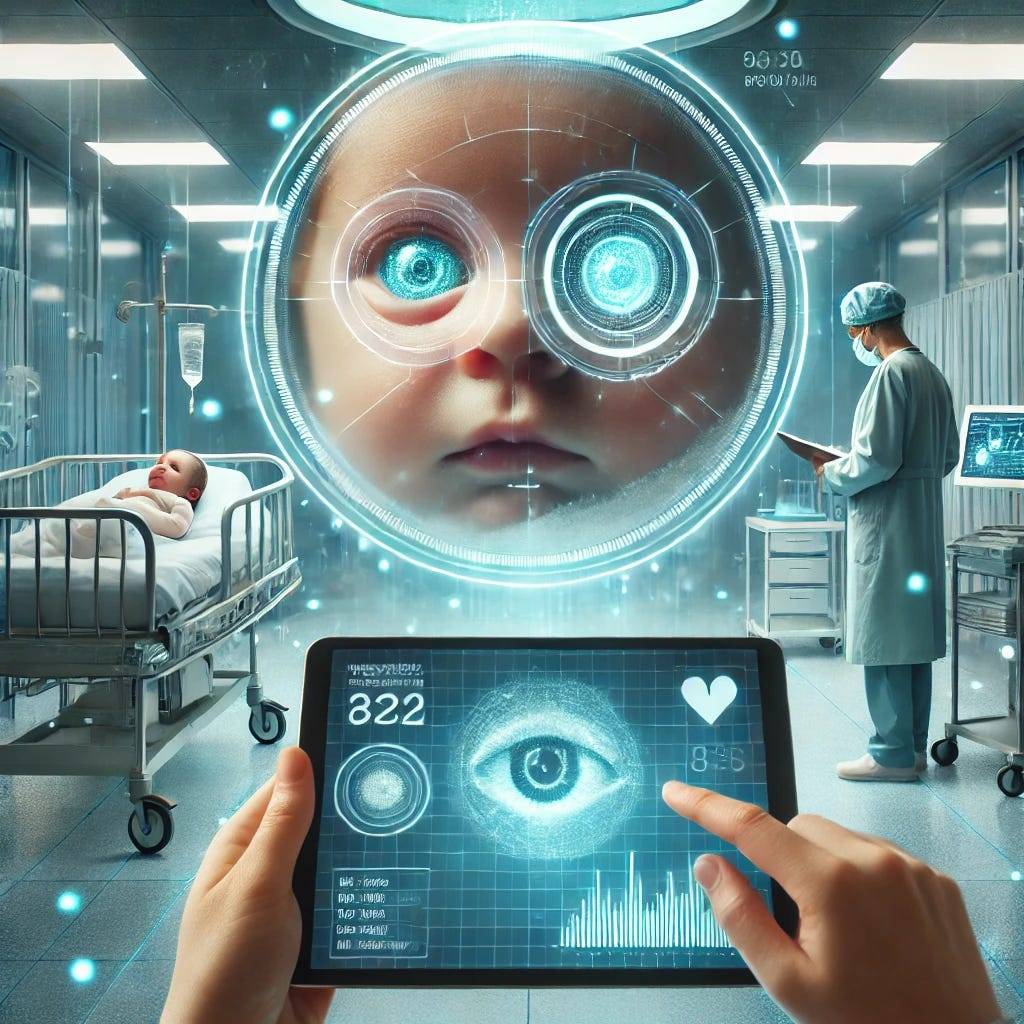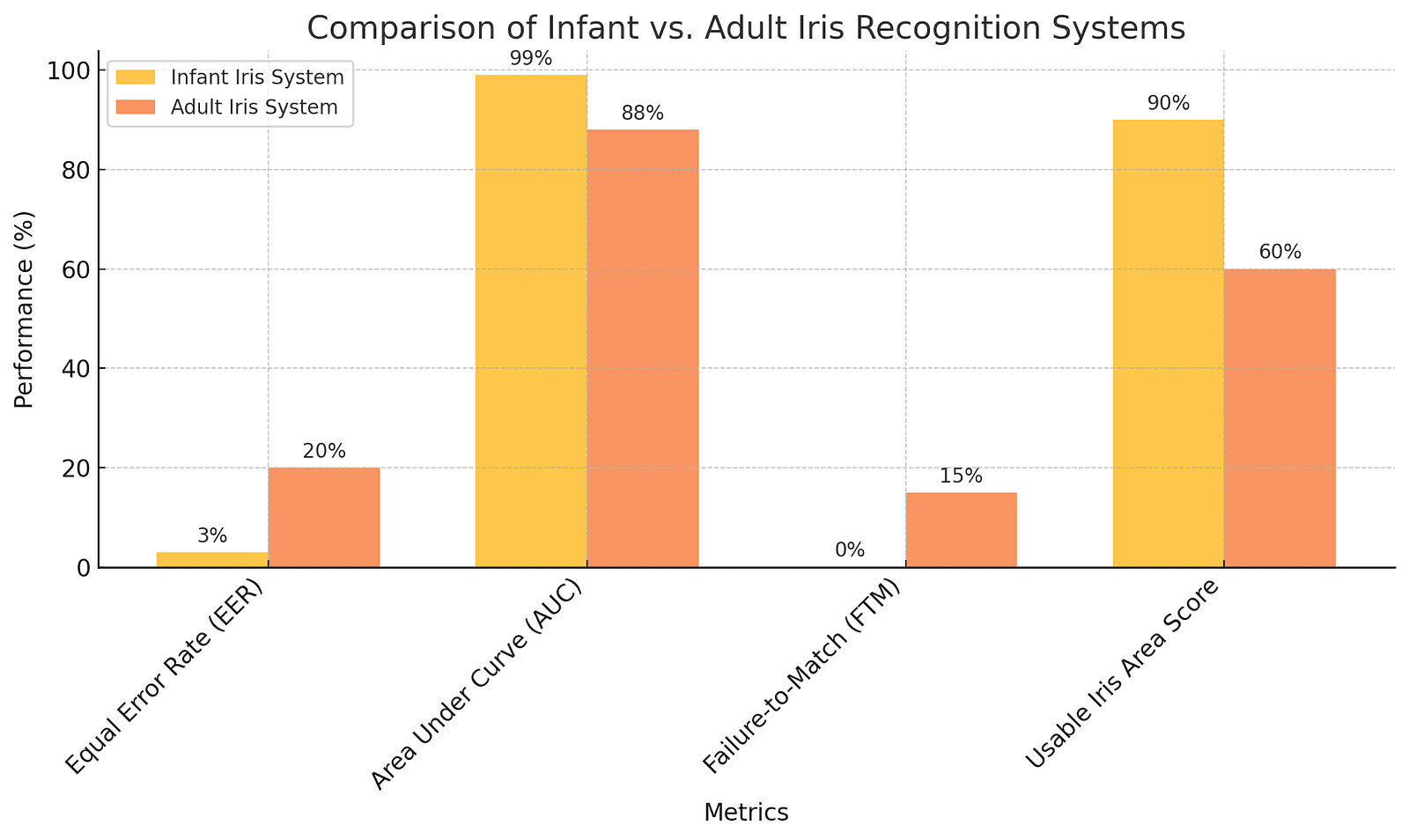
Imagine a world where newborns can be identified with the same precision as fingerprints — only through their eyes. In a groundbreaking study, researchers explore how infant iris recognition could revolutionize neonatal safety, reduce baby-swapping incidents, and create life-long biometric identities. A new article delves into the science behind this innovation, the challenges it overcomes, and its potential to transform the way we secure and care for our youngest population.
The Case for Infant Iris Recognition
Why Newborn Identification Needs Reinvention
Newborn misidentification is not a rare occurrence. Studies reveal that 20,000 babies are switched annually due to clerical errors or lack of advanced identity systems. This risk amplifies in under-resourced healthcare settings and refugee camps where identity management is often non-existent. Current methods like wristbands and footprint analysis are fallible and temporary. Unlike other biometric traits, such as fingerprints, which take years to fully develop, the iris’s unique patterns are formed by the eighth month of gestation, making it an ideal candidate for early and accurate identification.
The Technology Behind the Breakthrough
Custom-Built for Infants
The study utilized a specially designed iris sensor tailored for newborns, equipped with high-resolution imaging and near-infrared (NIR) illuminators. Unlike commercial iris scanners, this device accounts for the distinct characteristics of infant eyes, such as brighter pupils and less pigmentation. Paired with a cutting-edge segmentation model, it achieved an unprecedented Equal Error Rate (EER) of 3% and an Area Under the Curve (AUC) of 99%, significantly outperforming existing adult-focused systems.
The Role of Artificial Intelligence
To address the limited availability of infant iris data, the researchers developed a StyleGAN-based generative model capable of creating synthetic iris images. This approach not only ensured privacy but also provided a robust dataset to train the segmentation algorithms, overcoming challenges of overfitting and scarcity.
Real-World Applications and Impact
Revolutionizing Neonatal Care
Implementing infant iris recognition in hospitals could virtually eliminate baby-swapping errors and significantly reduce abduction rates. In the United States alone, 66% of infant abductions occur in healthcare settings. With this technology, hospitals can ensure that every newborn is accurately identified before leaving the premises.
A Lifelong Biometric Passport
Unlike traditional identification methods, iris recognition offers a permanent solution. Once captured, the iris patterns remain stable over time, potentially providing a life-long biometric identity. This could revolutionize healthcare by linking medical records from birth to adulthood, ensuring continuity of care even in cases of displacement or adoption.
The graph below illustrates a comparative analysis of the proposed infant iris recognition system against existing adult-focused systems, highlighting key performance metrics. It underscores the significant improvements achieved with the infant-specific technology, particularly in areas like accuracy and error reduction.

How Iris Recognition Outperforms Footprints
Footprint-based newborn identification has a 15% failure rate, while iris recognition offers 99% accuracy with modern segmentation models.
The Science Behind Infant Iris Patterns
An infant’s iris patterns are fully formed by the eighth month of pregnancy, offering a unique identifier from just weeks after birth.
A Privacy-First Approach
Using synthetic iris images, researchers protect infant privacy while advancing machine learning models for improved recognition.
Cost-Effective Security
Custom-built infant iris scanners are safer, more affordable, and portable, making them ideal for high-risk areas like refugee camps.
Global Implications
Incorporating biometric identification in humanitarian settings could revolutionize aid delivery, healthcare, and family reunification.
Towards a Safer Future: Embracing Iris Recognition for All Ages
The promise of infant iris recognition extends beyond reducing errors and abductions in hospitals. It represents a leap toward creating a secure and interconnected identity framework that follows individuals through life. As the technology evolves, it could become a cornerstone in global efforts to enhance safety, healthcare, and social services. By embracing this innovation, we take a vital step toward a world where the youngest and most vulnerable are no longer at risk of being forgotten or misplaced.
About Disruptive Concepts
Welcome to @Disruptive Concepts — your crystal ball into the future of technology. 🚀 Subscribe for new insight videos every Saturday!
See us on https://twitter.com/DisruptConcept
Read us on https://medium.com/@disruptiveconcepts
Enjoy us at https://disruptive-concepts.com
Whitepapers for you at: https://disruptiveconcepts.gumroad.com/l/emjml
New Apps: https://2025disruptive.netlify.app/







